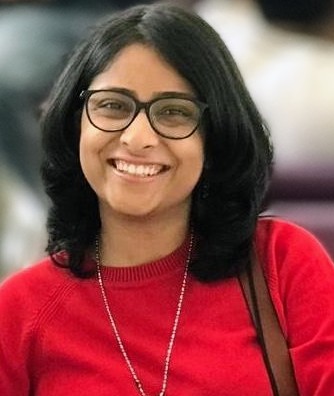1.Common and Curable
Retinoblastoma is the most common childhood ocular malignancy. Annually there are about 6000 new cases worldwide. It is most commonly diagnosed at 15-18 months of age although in developing countries, older children also present with the disease. It is potentially curable if detected early and with proper management. Currently, the survival rate is as high as 95% with 90% eye salvage and 85% vision salvage.
2 The root of the Family Tree
Retinoblastoma can be associated with germline mutation or somatic mutations of the RB1 gene on the long arm of chromosome 13. Heritable retinoblastoma constitutes 30-40% of all retinoblastomas while the rest are non- heritable. 25% of the germline mutations are familial with autosomal dominant inheritance and the remaining occur de novo. In heritable retinoblastoma, patients are prone to other second primary neoplasia including pinealoblastoma, osteosarcoma and soft tissue sarcomas. Genetic testing for germline mutations are available.
The doctor must make a pedigree chart of three generations to list all siblings of the affected child. Parent and sibling screening is very important. It should be done not only for bilateral RB (all have germline mutation) but also unilateral RB with multifocal tumour (10-15% can have germline mutation). While genetic testing is ideal, it is not feasible in a lot of cases. Careful clinical screening can detect 50% of the cases by 2 months of age, 85% by 6 months and 100% by 12 months. The empirical guidelines for sibling examination under anaesthesia are as per the age of the sibling:
|
Age of the child |
Frequency of examination |
|
Birth |
First exam within 2 weeks of birth |
|
Birth to 3 months |
Every 1 month |
|
3 months- 1 year |
Every 2 months |
|
1-2 years |
Every 3 months |
|
2-3 years |
Every 4 months |
|
3-5 years |
Every 6 months |
3. Seek and Ye Shall Find
The most common presenting symptom is leukocoria (42%), followed by squint (23%) and poor vision. Leukocoria is usually noticed by parents or grandparents in sunlight or in the photograph taken with a flash camera. Diminution of vision will be a complain only in older children. In advanced cases, children can also present with redness of eye because of neovascular glaucoma, intraocular sterile inflammation from a necrotic tumour or extraocular extension of the lesion. Proptosis without eyelid inflammation is usually because of an orbital RB. Proptosis with eyelid edema is most often because of sterile inflammation in RB. It is important that retinoblastoma is suspected and kept in the differential diagnoses of children presenting with unilateral eyelid edema, sterile hypopyon in a white eye, buphthalmos, phthisis bulbi and hyphema. Simple fundus examination or an ultrasound can help in the diagnosis. No intervention should be done before ruling out an intraocular tumour. All suspected cases should be referred to a higher centre capable of treating RB.
4. IO is the Key
The diagnosis of retinoblastoma is clinical. Every child with suspected RB must undergo a fundus examination under anesthesia with an indirect ophthalmoscope by indenting the globe to visualize the periphery till the ora. One must examine each clock hour meticulously. The tumour is a dome shaped retinal mass with dilated feeder vessels dipping into the tumor. It grows as an exophytic tumour away from the vitreous cavity (with subretinal fluid and seeds) or as an endophytic tumour towards the vitreous cavity (with vitreous seeding). Most common type is the mixed variant with both endophytic and exophytic components. There is a fourth type seen more commonly in older children, the diffuse infiltrating type with no obvious mass which grows from the periphery towards the centre, without calcification. Diffuse anterior RB is a variant of diffuse infiltrating RB arising from the anterior-most parts of the retina and growing anteriorly. other findings can be megalocornea, corneal opacities, odema, haab striae, shallow anterior chamber, neovascularization of iris, cataract, posterior synechiae, AC seeds, and vitreous hemorrhage.
5 Differential Dilemma
The differential diagnosis of retinoblastoma include-
- Coats Disease
- Persistent fetal vasculature
- Vitreous hemorrhage
- Toxocariasis
- Familial exudative vitreoretinopathy
- Retinal detachment
- Congenital cataract
- Astrocytic hamartoma
- Retinopathy of prematurity
- Medulloepithelioma
- Coloboma
6. Choosing the Right Scan
Ultrasound is simple and very easily available. B scan can detect the intraocular tumour with moderate to high intensity spikes suggestive of calcification within the lesion. An immersion B scan is very useful in detecting anteriorly situated lesions. MRI orbit and brain with contrast is the test of choice to determine optic nerve extension, choroidal extension and pinealoblastoma. The tumour is hyperintese on T1 and hypointense on T2. It is recommended in bilateral cases, familial cases, cases with the tumour is obscuring or involving the disc, and those with suspected choroidal extension or ciliary body extension. CT scan is less expensive but exposes the child to radiation. CT scan shows calcification which is helpful in doubtful cases. Intralesional calcification is characteristic. Additionally, it can help detect extraocular extension and asymmetry of optic nerve.
7. Grouping and Staging
Grouping is important to decide the management of the eye and gives an idea about eye salvage while staging is essential for prognosis of life. The ICRB classification is most commonly followed but the AJCC 8 classification is now being made standard for uniformity in trials. It has introduced the Heritable trait (H) as a prognostic factor with H1 patients having bilateral RB, RB with intracranial primitive neuroendocrine tumour, family history of RB, or molecular definition of a constitutional RB1 gene mutation. Patients with clinical high risk factors like neovascularization of the iris, neovascular glaucoma, opaque media from anterior chamber or vitreous hemorrhage, ciliary body or extrascleral extension, bone marrow biopsy and CSF tap should be collected to stage the disease prior to initiation of treatment.
International Classification of Retinoblastoma
Grouping
|
Stage 0 |
Unilateral or bilateral RB and no enucleation |
|
Stage I |
Enucleation with complete histological resection |
|
Stage II |
Enucleation with microscopic tumour residual (anterior chamber, choroid, optic nerve, sclera) |
|
Stage III |
Regional extension |
|
Overt orbital |
|
|
Preauricular or cervical lymph node extension |
|
|
Stage IV |
Metastatic disease |
|
Hematogenous metastasis Single lesion Multiple lesion |
|
|
CNS extension Prechiasmatic lesion CNS mass Leptomeningeal disease |
Staging
|
Group A: Small tumour |
Retinoblastoma |
|
Group B: Larger Tumour |
Rb>3mm |
|
Macular location |
|
|
Juxtapapillary location |
|
|
Clear subretinal fluid |
|
|
Group C: Focal seeds |
Subretinal seeds |
|
Vitreous seeds |
|
|
Subretinal seeds and vitreous seeds |
|
|
Group D: Diffuse seeds |
Subretinal seeds >3mm from the retinal tumour |
|
Vitreous seeds >3mm from the retinal tumour |
|
|
Subretinal and vitreous seeds >3mm from the retinal tumour |
|
|
Group E: Extensive retinoblastoma |
RB occupying 50% of the globe |
|
Neovascular glaucoma |
|
|
Opaque media from hemorrhage in anterior chamber, vitreous or subretinal space |
|
|
Invasion of postlaminar optic nerve, choroid (2mm), sclera, orbit, anterior chamber |
8 Treat Logically
The child should be treated keeping the three sequential goals in mind- life salvage, eye salvage and vision salvage. Patients should be referred to centres equipped to treat retinoblastoma with ocular oncology department. Intravenous chemotherapy (IVC) is widely available. Chemotherapy can be neoadjuvant, chemoreductive or adjuvant. Standard or high dose of triple drug, vincristine, etoposide and carboplatin are given every 4 weeks for 6 cycles. Bilateral cases, cases with sterile orbital inflammation, orbital RB, Group A, B, C with tumour over visually critical area, bad group D or group E eyes with clinical high risk factors and as a bridge therapy before starting IAC in children less than 3 months are candidates for IVC. Superselective ophthalmic artery chemotherapy is highly effective and is almost free from the systemic side effects of intravenous chemotherapy. Three drugs, topotecan, carboplatin and melphalan is used for 3 cycles given every 3 weeks. It is also effective against vitreous seeds. It is recommended for unilateral group D and E, Group A, B, C with tumour over visually critical area, refractory or recurrent cases after systemic chemotherapy. Focal therapy with TTT and cryotherapy are indicated for group A tumours of the periphery and extramacular as primary treatment or tumour consolidation along with chemotherapy. Intravitreal chemotherapy has improved the outcome for eyes with vitreous seeds. Plaque brachytherapy is also found to be effective. EBRT is now reserved as adjuvant therapy for eyes with retrolaminar optic nerve extension, and orbital RB.
Histopatholgy guides adjuvant therapy. High-risk factors on histopathology include- massive choroidal invasion (>3mm), full-thickness scleral or extraocular extension, Retrolaminar optic nerve extension, optic nerve transection involvement, perineural or transmeningeal involvement, anterior chamber involvement. Six cycles of adjuvant chemotherapy with or without EBRT reduces the risk of recurrence and metastasis.
Orbital RB also has a good life prognosis if there is no metastasis. Neoadjuvant high dose chemotherapy for 3-6 cycles followed by assessment of radiological resolution of extraocular component and enucleation/extended enucleation/ exenteration followed by adjuvant chemotherapy to complete 12 cycles and EBRT is the advised protocol
9. Et tu Enucleation
There are specific indications for enucleation in the present era of RB management where we are talking about vision salvage. It can be primary or secondary. Primary enucleation is indicated in unilateral group E eyes with clinical high-risk factors. Group D and E eyes that do not respond to chemoreduction and focal therapy, media opacity during the course of treatment with active tumour that cannot be assessed require secondary enucleation. Enucleation by minimal manipulation myoconjunctival technique ensures safe surgery with good prosthetic motility. One must aim for a long optic nerve stump more than 15 mm. The specimen must undergo pathological evaluation for high-risk factors that will aid in deciding adjuvant treatment. Pathologist should be trained to evaluate and report the retinoblastoma specimen. Serial sections (bread loafing) of the optic nerve are essential to rule out skip lesions. An appropriately sized implant should be placed to preserve the volume of the socket. Cosmesis is an important part which should not be ignored. A good ocularist can prepare a custom prosthesis for the child. Protective glasses are mandatory.
10. Do not Fail to Follow up
Patients should be followed up even after the complete regression of the tumour to evaluate for any recurrence or new tumours. The duration between follow up visits is gradually increased. Upon complete and stable event free regression, 3 monthly evaluation is done for a year, 4 monthly for a year and then every 6 monthly for 3 years. The child is then followed up once a year lifelong. For enucleated eyes, lymph nodes and the socket should be examined. Spontaneous popping out of prosthesis may be an early sign of orbital recurrence.
Retinoblastoma management is both a skill and an art. It requires good clinical acumen, sound knowledge, solid determination, immense patience, and an empathetic heart to treat the tumour and heal the child.

